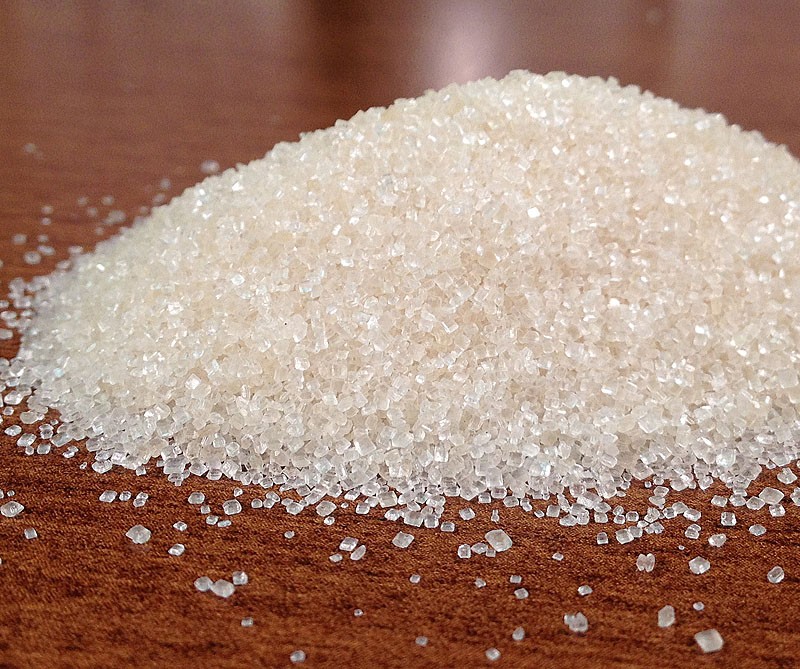An Extensive Overview to the Ecological Effect and Sustainability Practices in Walking Stick Sugar Handling
The environmental impact of cane sugar handling presents a complicated selection of challenges that warrant careful exam. From soil degradation and extreme water use to the carbon impact connected with cultivation and production, the effects of typical practices are far-reaching. What certain techniques can be executed to strike an equilibrium in between efficiency and ecological stewardship?
Summary of Cane Sugar Processing
Cane sugar handling involves a collection of organized steps that change sugarcane into polished sugar. Originally, gathered sugarcane is delivered to refining centers, where it goes through cleaning to remove soil and particles. Following this, the cane is crushed to draw out juice, which is after that cleared up by removing contaminations through heating and the addition of lime.
The clarified juice undertakes evaporation, where water is removed to concentrate the sugar web content. These crystals are divided from the staying syrup using centrifugation, resulting in raw sugar.
The final product is then dried and packaged for circulation. Throughout this entire process, keeping efficiency and quality control is vital to guarantee the sugar satisfies market requirements. Each step in cane sugar handling not just adds to the final product however also has implications for resource use and waste generation, setting the stage for discussions on sustainability and ecological effects related to sugar manufacturing.
Ecological Challenges of Production
The manufacturing of walking cane sugar provides numerous considerable ecological difficulties that warrant focus. One main problem is the considerable use agrochemicals, consisting of plant foods and pesticides, which can cause soil degradation, biodiversity loss, and contamination of neighborhood water resources. The drainage from sugarcane fields frequently carries these chemicals right into close-by ecosystems, interrupting water life and affecting the health of neighborhoods reliant on these water bodies.
One more challenge is the high power usage linked with sugarcane handling. The boiling and refining phases require significant warmth, mostly generated by shedding nonrenewable fuel sources, adding to greenhouse gas exhausts. Furthermore, the extensive acreage needed for sugarcane cultivation can result in logging and habitat damage, further aggravating climate change and harmful wildlife.
In addition, the labor practices in some regions elevate honest problems, as employees might deal with inadequate working problems and poor salaries. This circumstance frequently continues a cycle of poverty in regional communities. Cane Sugar Processing. Resolving these ecological obstacles is vital for establishing more sustainable practices in walking cane sugar production, ultimately benefiting both the setting and the neighborhoods associated with this industry
Water and Land Use Impact
Water sources and land utilization are essential elements in the cane sugar industry that substantially impact the atmosphere. The farming of sugarcane calls for significant water input, with price quotes recommending that it can take in as much as 2,000 litres of water per kilogram of sugar produced. This extensive use water usually brings about exhaustion of neighborhood water sources, impacting not only the sugarcane haciendas yet likewise bordering ecosystems and neighborhoods that count on the very same water resources for agriculture and domestic use.

Additionally, land use for sugarcane cultivation can cause deforestation and the conversion of natural habitats into monoculture vineyards. This technique diminishes biodiversity, interferes with regional environments, and contributes to dirt destruction. The growth of sugarcane fields typically encroaches on useful agricultural land, developing competitors for resources between food and biofuel manufacturing.
Sustainable methods, such as optimizing irrigation techniques and implementing plant rotation, are important to mitigate these effects. By embracing extra reliable water use and land administration methods, the walking stick sugar sector can decrease its environmental impact, making certain a balance in between agricultural efficiency and environmental conservation.
Greenhouse Gas Emissions
Greenhouse gas emissions represent a considerable environmental problem within the walking stick sugar processing industry, specifically as agricultural methods increase to satisfy worldwide need. The farming of sugarcane, a plant that thrives in exotic climates, depends greatly on artificial fertilizers use this link and chemicals, which contribute to nitrous oxide emissions. Furthermore, land-use modifications, consisting of deforestation for new sugarcane vineyards, release co2 saved in plant life and dirt.
Throughout handling, energy intake is an additional major resource of greenhouse gas discharges - Cane Sugar Processing. Many sugar mills use fossil fuels to power equipment and produce heat, causing significant carbon impacts. Moreover, the transport of raw sugarcane and ended up items includes layers of exhausts with gas combustion in vehicles
The collective effect of these discharges worsens climate change, posing dangers not only to the environment however also to the long-lasting feasibility of the market. Stakeholders should acknowledge the urgent requirement for thorough techniques that resolve these emissions. This involves examining current agricultural practices, refining techniques, and transportation systems to determine areas for improvement and mitigation. Addressing greenhouse gas emissions is necessary for fostering a more lasting walking cane sugar industry in an altering environment.

Lasting Practices and Innovations
Sustainable practices and innovations are significantly vital in the cane sugar processing sector as stakeholders seek to reduce environmental effects while keeping efficiency. One significant improvement is the application of incorporated crop management, which maximizes resource usage by integrating soil administration, parasite control, and crop turning techniques. This technique enhances return while decreasing chemical inputs and protecting dirt wellness.
In addition, the fostering of renewable resource sources, such as biomass from sugarcane residues, has obtained grip - Cane Sugar Processing. By converting waste products into power, refining centers can decrease their reliance on fossil fuels, thereby decreasing greenhouse gas exhausts
Water monitoring techniques have additionally seen enhancements with the recycling and reusing of water in handling plants, substantially minimizing freshwater intake. Technologies in modern technology, such as accuracy agriculture, make it possible for farmers to check crop health and wellness and resource use better, making sure lasting farming methods.
Additionally, qualification programs like Fair Trade and Jungle Alliance motivate ecologically accountable farming practices and advertise social equity within the supply chain. By welcoming these lasting techniques and technologies, the walking stick sugar handling industry can boost its durability and add positively to ecological stewardship.
Final Thought
The ecological effect of cane sugar processing offers substantial difficulties, including dirt degradation, high water intake, and greenhouse gas discharges, together with ethical issues associated with labor methods. Resolving these This Site concerns with sustainable techniques, such as integrated crop administration, renewable power adoption, and water recycling, is vital. By promoting environmentally responsible and socially equitable approaches in sugar production, the sector can minimize its unfavorable impacts, ensuring a more sustainable future for both ecological communities and communities associated with this market.
Walking cane sugar handling involves a collection of systematic actions that transform sugarcane into refined sugar. Each action in cane sugar handling not only adds to the last product however additionally has implications for resource use and waste generation, setting the phase for conversations on sustainability and ecological impacts linked with sugar manufacturing.
Greenhouse gas navigate to this website discharges stand for a significant environmental issue within the walking cane sugar handling industry, specifically as farming practices expand to fulfill international demand.Lasting methods and developments are increasingly important in the cane sugar processing sector as stakeholders look for to lower ecological impacts while maintaining efficiency.The environmental influence of walking stick sugar handling provides significant obstacles, including dirt degradation, high water usage, and greenhouse gas exhausts, together with ethical worries associated to labor techniques.